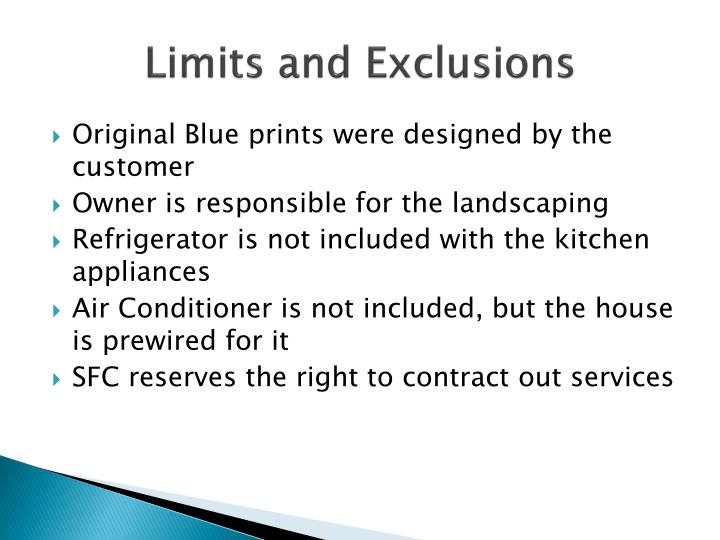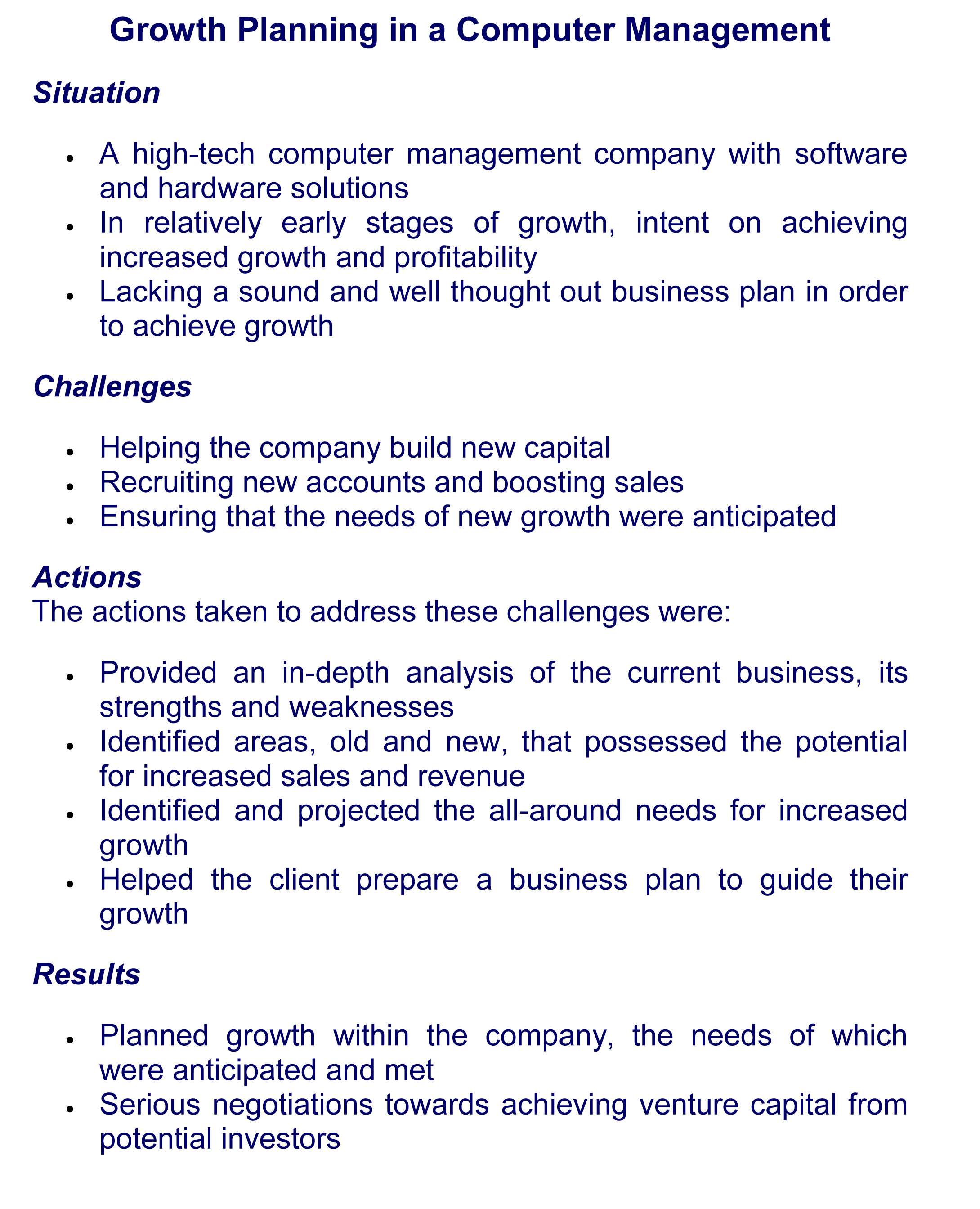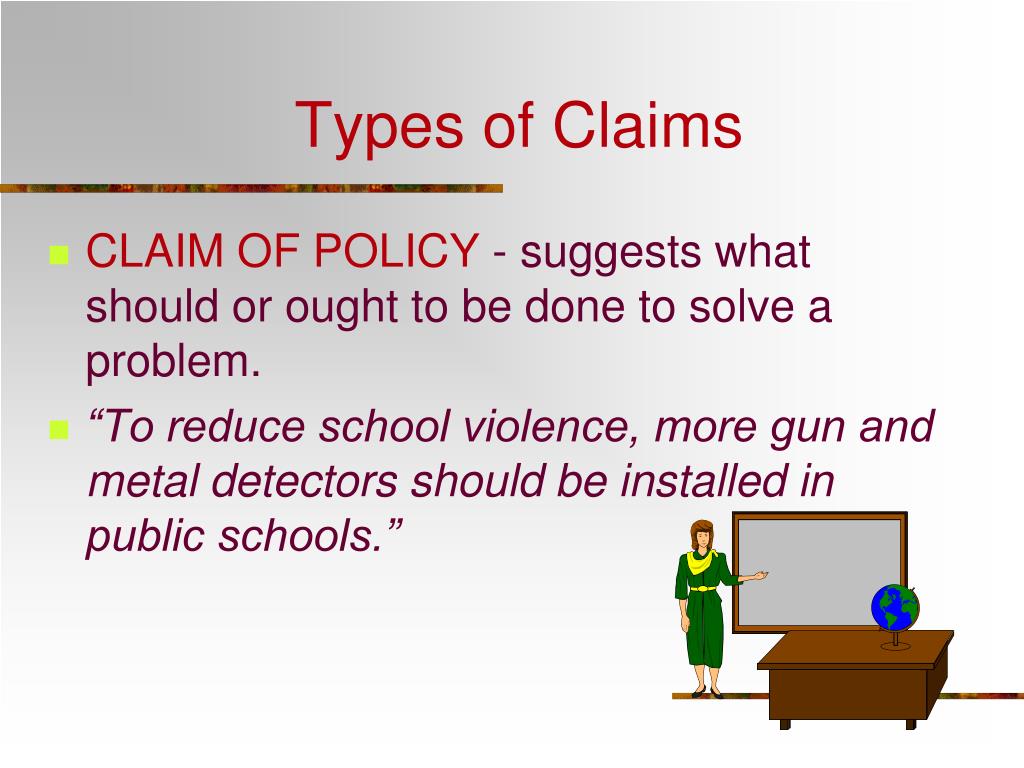A Personal Injury HO 24 81 Endorsement may be the solution you’ve been looking for if you want comprehensive protection against potential risks and lawsuits. In this article, we’ll go over the details of this endorsement and examine how it can help you if you have unexpected financial obligations.
HO 24 81 Endorsement is a specialized insurance add-on that provides additional coverage to your homeowners’ insurance policy in the event of an injury. The policy protects you against bodily injury, property damage, and personal injury, as well as any legal disputes that may arise.
We’ll go over the many benefits this endorsement provides and explain how it can help you stay in control of your finances. This article will provide valuable insights and real-life examples, allowing you to make an informed decision about homeowners’ insurance while also providing valuable insight and real-life examples. Whether you are already familiar with homeowners’ insurance or are just starting to research options, this article will assist you in making
We’d like to assist you in making the right decision with Personal Injury Endorsement HO 24 81 if you are interested in learning more about how it can protect you from potential risks. Your home deserves the best coverage, and we’re here to assist you in making the right decision. Let’s start this journey of understanding and ensuring your peace of mind for the long term.
What is Personal Injury HO 24 81 Endorsement?
When it comes to protecting our homes and loved ones, having the right insurance coverage is paramount. One such essential component of homeowners’ insurance is the Personal Injury HO 24 81 Endorsement. In this comprehensive endorsement, homeowners can find a robust layer of protection that goes beyond the standard coverage, safeguarding them from a wide range of potential risks.
Personal Injury HO 24 81 Endorsement, often abbreviated as PI HO 24 81, is a specialized add-on designed to enhance the scope of a standard homeowners’ insurance policy. It serves as a powerful tool to protect homeowners from financial repercussions in case of accidents or legal disputes related to personal injury. Understanding the intricacies of this endorsement is crucial for making informed decisions when selecting the most suitable insurance coverage for one’s home.
At its core, the Personal Injury HO 24 81 Endorsement extends coverage beyond the typical property damage and liability protection that homeowners’ insurance offers. This endorsement takes a proactive approach in shielding policyholders from potential legal claims arising from incidents such as libel, slander, defamation, and invasion of privacy. By adding this endorsement to their existing policy, homeowners gain an added layer of confidence, knowing that they are safeguarded against unforeseen challenges that could arise from personal injury claims.
Coverage under Personal Injury HO 24 81 Endorsement:
Bodily Injury Coverage: This aspect of the endorsement provides protection against lawsuits resulting from bodily harm caused to others on or off the homeowner’s property. It can include medical expenses, legal fees, and compensation for the injured party, helping homeowners avoid significant financial strain resulting from such incidents.
Property Damage Coverage: Under this endorsement, homeowners are protected from claims of property damage caused by their actions or negligence. For instance, if a homeowner accidentally damages a neighbor’s property, this coverage can step in to mitigate the financial impact.
Personal Injury Offenses Coverage: This aspect of the endorsement focuses on non-physical harm, such as libel, slander, defamation, or invasion of privacy. In today’s digital age, where social media and online interactions are prevalent, this coverage becomes particularly relevant, safeguarding homeowners from potential legal actions stemming from their words or actions.
Key Terms in Personal Injury HO 24 81 Endorsement:
Understanding the terminology used in insurance policies is crucial to ensuring that homeowners comprehend the extent of their coverage fully. Some key terms used in the Personal Injury HO 24 81 Endorsement include:
Endorsement: An endorsement is a modification or addition to an existing insurance policy. In the case of Personal Injury HO 24 81, it expands the coverage provided by the homeowners’ insurance policy.
Liability Coverage: Liability coverage pertains to protection against claims and legal actions for injuries or damages that the homeowner is legally responsible for. The Personal Injury HO 24 81 Endorsement focuses on extending liability coverage to include personal injury offenses.
Premium: The premium is the amount a homeowner pays for the insurance coverage. When adding the Personal Injury HO 24 81 Endorsement to a policy, the premium may be adjusted accordingly based on factors such as the homeowner’s location, claims history, and coverage limits.
Coverage Details of Personal Injury HO 24 81 Endorsement
When it comes to safeguarding your home and family, the Coverage Details of the Personal Injury HO 24 81 Endorsement play a pivotal role in offering comprehensive protection. This specialized add-on to your standard homeowners’ insurance policy extends its coverage to include three crucial aspects: bodily injury, property damage, and personal injury offenses.
Coverage for Bodily Injury: Accidents can happen unexpectedly, and when they result in bodily harm to others, the consequences can be both emotionally and financially draining. With the Personal Injury HO 24 81 Endorsement, you can rest assured knowing that you have a safety net in place to handle such situations. This coverage is designed to protect you from potential lawsuits and legal claims arising from bodily injuries sustained by third parties on or off your property. Whether it’s a slip and fall incident or an accidental injury during a social gathering, this coverage can prove to be a lifesaver. Medical expenses, legal fees, and compensation for the injured party are some of the elements covered, reducing the burden of unforeseen financial liabilities.
Coverage for Property Damage: As a homeowner, you understand the importance of taking care of your property and the properties of those around you. However, accidents can still occur, and unintentional property damage might be a consequence. The Personal Injury HO 24 81 Endorsement provides coverage for property damage caused by you or a family member, offering protection against potential claims and legal actions. Whether you accidentally damage a neighbor’s fence, break a valuable item while visiting a friend, or even cause damage to a public property inadvertently, this coverage steps in to alleviate the financial burden associated with such incidents.
Coverage for Personal Injury Offenses: In today’s interconnected world, communication has shifted to the digital realm, where personal interactions happen at the click of a button. Unfortunately, this also opens the door to personal injury offenses, such as libel, slander, defamation, or invasion of privacy. The Personal Injury HO 24 81 Endorsement takes this into account and offers coverage for non-physical harm that you may unintentionally cause through your words or actions. As social media becomes a central part of our lives, ensuring protection against potential legal actions arising from online interactions becomes increasingly vital. This endorsement provides you with peace of mind, knowing that you are safeguarded from the consequences of such personal injury offenses.
The Power of Comprehensive Protection
With the Personal Injury HO 24 81 Endorsement, homeowners gain access to a powerful tool that goes beyond the conventional coverage of standard policies. This specialized add-on provides a safety net for you and your family, covering a range of personal injury risks that might otherwise leave you financially vulnerable. In a world where accidents and misunderstandings can happen at any time, having this comprehensive protection is a prudent choice.
Customizable Coverage for Your Needs
Each homeowner’s needs are unique, and the Personal Injury HO 24 81 Endorsement recognizes this by offering customizable coverage options. Whether you require higher limits for bodily injury coverage or want to adjust property damage coverage based on your specific circumstances, this endorsement allows you to tailor your protection to match your needs. By working closely with your insurance provider, you can find the perfect balance of coverage to ensure you are well-prepared for any potential risks.
Common Exclusions and Limitations

When it comes to understanding the intricacies of the Personal Injury HO 24 81 Endorsement, it is equally essential to be aware of its common exclusions and limitations. While this specialized add-on offers valuable coverage for personal injury risks, there are certain situations and scenarios where it may not apply. Exploring these exclusions, as well as the endorsement’s limitations and restrictions, can help homeowners make well-informed decisions when tailoring their insurance coverage to suit their specific needs.
Explanation of Exclusions from Coverage:
Intentional Acts: The Personal Injury HO 24 81 Endorsement is designed to protect homeowners from unintended or accidental incidents. Therefore, intentional acts or injuries caused with the intent to harm others are typically excluded from coverage. Any deliberate actions leading to personal injury offenses will not be covered under this endorsement.
Business-Related Activities: Home-based businesses are becoming more prevalent, but it’s essential to understand that the Personal Injury HO 24 81 Endorsement generally excludes coverage for personal injury offenses related to business activities. Separate business insurance is required to protect against such risks.
Criminal Activities: Any personal injury offenses arising from criminal activities, such as assault or battery, are typically not covered by this endorsement. Homeowners engaging in illegal activities will not find protection under the Personal Injury HO 24 81 Endorsement.
Limitations and Restrictions of the Endorsement:
Coverage Limits: Like any insurance policy, the Personal Injury HO 24 81 Endorsement comes with coverage limits. These limits represent the maximum amount the insurance provider will pay in the event of a claim. It is crucial for homeowners to understand these limits to ensure they have adequate coverage for potential risks.
Geographical Limitations: Some Personal Injury HO 24 81 Endorsements may have geographical limitations, which means they may not provide coverage outside a specified geographic area. Homeowners should review these limitations to determine if their coverage extends to locations they frequently visit or own property.
Time Limitations: The endorsement may have specific time limitations for filing claims related to personal injury offenses. It is essential for homeowners to be aware of these time frames to ensure timely reporting of incidents and potential claims.
How to Identify Potential Gaps in Coverage:
Reviewing Policy Documents: The first step in identifying potential gaps in coverage is to carefully review the Personal Injury HO 24 81 Endorsement and the homeowners’ insurance policy. Understanding the terms, conditions, and exclusions laid out in these documents can help homeowners grasp the extent of their protection.
Consulting with Insurance Providers: Insurance policies can be complex, and deciphering the fine print may be challenging for some homeowners. Consulting with insurance providers or agents can provide valuable insights and clarification on any areas of uncertainty.
Assessing Personal Risks: Every homeowner’s lifestyle and circumstances are unique. Assessing personal risks, such as hosting social gatherings or having frequent visitors, can help homeowners identify areas where additional coverage may be necessary.
Comparing Policies: It’s essential for homeowners to explore multiple insurance providers and compare policies. Each provider may offer different endorsements and coverage options, allowing homeowners to find the best fit for their specific needs.
In conclusion, while the Personal Injury HO 24 81 Endorsement provides valuable coverage for personal injury risks, it also comes with common exclusions and limitations that homeowners should be aware of. By understanding the exclusions and restrictions, homeowners can make informed decisions about their insurance coverage, ensuring they have adequate protection against potential risks. Regularly reviewing policy documents, consulting with insurance providers, and assessing personal risks are essential steps in identifying and addressing potential gaps in coverage. With the right knowledge and support, homeowners can tailor their insurance policies to meet their unique needs, allowing them to face the future with confidence and peace of mind.
Benefits of Personal Injury HO 24 81 Endorsement
The Personal Injury HO 24 81 Endorsement offers a host of benefits for homeowners, providing a comprehensive layer of protection that goes beyond the standard coverage of homeowners’ insurance. Understanding these advantages can empower homeowners to make informed decisions when considering whether to add this specialized endorsement to their policy.
Advantages for Homeowners:
Expanded Coverage: One of the primary benefits of the Personal Injury HO 24 81 Endorsement is the expansion of coverage it offers. By encompassing bodily injury, property damage, and personal injury offenses, homeowners gain comprehensive protection against a wide range of potential risks. This extended coverage is particularly valuable in today’s litigious society, where lawsuits can arise from unexpected incidents.
Enhanced Liability Protection: Homeowners’ insurance typically includes liability coverage, but it may not fully protect against personal injury offenses like libel or slander. The Personal Injury HO 24 81 Endorsement bridges this gap, offering enhanced liability protection to shield homeowners from legal claims related to non-physical harm. With the rise of social media and online interactions, this coverage becomes increasingly vital in safeguarding homeowners’ reputation and financial well-being.
Peace of Mind: Knowing that you have robust insurance coverage in place brings peace of mind. The Personal Injury HO 24 81 Endorsement instills confidence in homeowners, allowing them to face life’s uncertainties with greater assurance. Whether it’s hosting social gatherings, participating in community events, or engaging in online discussions, having this endorsement in place can alleviate worries about potential legal consequences.
Protection against Various Risks and Lawsuits:
Social Gatherings: Hosting social gatherings at home is a common occurrence, but accidents can happen unexpectedly. In the event of an accident causing bodily injury or property damage to a guest, the Personal Injury HO 24 81 Endorsement provides protection against potential lawsuits. This coverage extends to accidents both on and off the homeowner’s property, offering a safety net in times of need.
Online Interactions: In the digital age, online interactions and social media play a significant role in our lives. However, personal injury offenses, such as defamation or invasion of privacy, can result from online interactions. The Personal Injury HO 24 81 Endorsement covers homeowners in case of potential legal actions arising from their words or actions in the virtual world.
Neighborhood Relations: Good relationships with neighbors are essential for a harmonious community. However, even unintentional property damage caused to a neighbor’s property can lead to disputes. The endorsement protects homeowners from claims related to property damage caused by them or their family members, ensuring that neighborly relationships remain intact.
Peace of Mind and Financial Security:
Reduced Financial Burden: Accidents and lawsuits can lead to significant financial burdens. The Personal Injury HO 24 81 Endorsement reduces the risk of homeowners facing substantial out-of-pocket expenses in case of personal injury-related incidents. Medical expenses, legal fees, and compensation for the injured party are some of the financial aspects covered by this endorsement.
Stress Reduction: Knowing that you are adequately protected against potential legal claims and lawsuits can significantly reduce stress levels. Homeowners can focus on creating a secure and comfortable home environment, without undue worry about unforeseen events that may lead to legal consequences.
How to Obtain Personal Injury HO 24 81 Endorsement?
Acquiring the Personal Injury HO 24 81 Endorsement is a crucial step for homeowners looking to enhance their insurance coverage and protect themselves from potential personal injury risks. Understanding the process of obtaining this specialized endorsement can empower homeowners to make informed decisions about their insurance policies.
Contacting Insurance Providers for Information:
The first step in obtaining the Personal Injury HO 24 81 Endorsement is to reach out to insurance providers for information. Homeowners can contact their current insurance company or explore various insurance carriers to inquire about the availability of this endorsement.
Insurance providers can offer insights into the coverage details, limitations, and exclusions of the endorsement. They can also provide homeowners with personalized quotes based on their unique circumstances and requirements.
Understanding the Application Process:
Once homeowners have decided to add the Personal Injury HO 24 81 Endorsement to their policy, they will need to go through the application process. This process typically involves providing relevant information to the insurance provider, which may include:
- Personal details of the homeowner and family members.
- Information about the property, such as its location, size, and construction type.
- Any past claims history or incidents related to personal injury offenses.
The insurance provider may also request additional documentation or conduct an inspection of the property to assess potential risks.
Factors that May Influence Premium Rates:
- Several factors can influence the premium rates for the Personal Injury HO 24 81 Endorsement. These include:
- Coverage Limits: Higher coverage limits may result in higher premiums, as they offer more extensive protection.
- Property Location: The location of the property can impact premium rates, as areas with higher risk factors may require additional coverage.
- Claim History: Homeowners with a history of past claims may be considered higher risk, leading to higher premiums.
- Home Safety Measures: Implementing safety measures in the home, such as security systems and smoke detectors, may help lower premium rates.
- Policy Deductibles: Opting for higher deductibles can lead to lower premium costs.
Navigating the Options:
- Homeowners should carefully evaluate their options before finalizing the Personal Injury HO 24 81 Endorsement. Considerations should include:
- Comparing Quotes: Obtaining quotes from multiple insurance providers allows homeowners to compare coverage and premium rates to find the most suitable option.
- Customizing Coverage: The Personal Injury HO 24 81 Endorsement is not one-size-fits-all. Homeowners should discuss their specific needs and risks with insurance providers to customize their coverage accordingly.
- Reviewing Policy Details: Thoroughly reviewing the policy documents and the endorsement’s terms and conditions is essential to understand the extent of coverage and any exclusions.
Making an Informed Decision:
- Acquiring the Personal Injury HO 24 81 Endorsement requires homeowners to make an informed decision that aligns with their unique circumstances and risk tolerance. By understanding the application process, factors influencing premium rates, and exploring the available options, homeowners can confidently select an endorsement that provides comprehensive protection.
Case Studies and Real-Life Examples

To truly grasp the significance of the Personal Injury HO 24 81 Endorsement, examining real-life scenarios and case studies can shed light on how this specialized coverage has protected homeowners in various situations. These examples provide insights into the value of the endorsement and its role in providing financial security and peace of mind.
Real-Life Scenario 1: Accidental Injury During a Family Gathering
- In a quiet suburban neighborhood, the Smith family was hosting a joyous family gathering to celebrate their daughter’s graduation. As relatives and friends gathered in their backyard, a guest accidentally tripped on a loose step and suffered a severe injury. The Personal Injury HO 24 81 Endorsement played a critical role in this situation, as it covered the medical expenses incurred by the injured guest, reducing the Smiths’ financial burden significantly. Moreover, the endorsement provided liability protection, preventing potential lawsuits from arising due to the accident. This scenario highlights how the endorsement extends coverage beyond standard policies, offering homeowners a safety net during unforeseen events.
Real-Life Scenario 2: Online Defamation and Legal Consequences
- In today’s digital age, online interactions can sometimes lead to personal injury offenses, such as defamation or invasion of privacy. In a notable case, a homeowner, Mr. Johnson, faced a lawsuit from a former colleague claiming defamation after a heated online argument. Fortunately, Mr. Johnson had the Personal Injury HO 24 81 Endorsement in place. The endorsement covered his legal fees and provided him with legal representation during the proceedings. Ultimately, the case was dismissed, but Mr. Johnson’s story serves as a powerful reminder of how this endorsement can protect homeowners from the potential consequences of their online actions.
Real-Life Scenario 3: Neighborly Property Damage Dispute
- Good relationships with neighbors are vital in maintaining a harmonious community. However, even minor incidents can sometimes lead to disputes. In one instance, the Wilsons accidentally caused damage to their neighbor’s fence while trimming a tree in their backyard. Rather than escalate the situation, the Wilsons informed their neighbor and contacted their insurance provider. The Personal Injury HO 24 81 Endorsement covered the cost of repairing the fence, fostering understanding between the neighbors and preventing any legal action. This real-life example demonstrates how the endorsement contributes to neighborly relations and protects homeowners from potential claims.
How the Endorsement Helped Homeowners in Different Situations:
Financial Security: In numerous cases, the Personal Injury HO 24 81 Endorsement provided financial security to homeowners, sparing them from significant out-of-pocket expenses arising from personal injury offenses.
Peace of Mind: Homeowners with the endorsement in place reported greater peace of mind, knowing they had comprehensive protection against a range of potential risks.
Liability Protection: The endorsement proved invaluable in shielding homeowners from potential legal claims and lawsuits, offering enhanced liability protection.
Customized Coverage: Homeowners appreciated the ability to customize their coverage based on their unique needs and circumstances, ensuring they were well-prepared for potential risks.
Timely Assistance: The endorsement facilitated timely assistance, covering medical expenses, legal fees, and other costs promptly in case of accidents or personal injury offenses.








